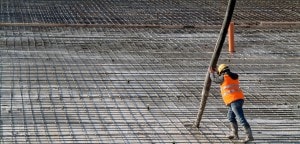
BS 8666 is the British Standard specifying requirements for steels used to reinforce concrete in the built environment. This standard is widely used in the construction industry – and has now been brought into alignment with Eurocode 2. This blog post explains more.
What do the Weaver Building in Swansea, a prefabricated 309-foot arch for the Turin Exhibition, and Switzerland’s Salginatobel Bridge have in common? Well, they were all pioneering and notable civil engineering projects that relied on reinforced concrete.
It’s necessary to reinforce concrete with steel rods, bars or mesh. This is because plain concrete is good under pressure (strong in compression) but its tensile strength is relatively poor.
Subsequently reinforced concrete has become one of the construction industry’s most commonly used materials. This explains the popularity of BS 8666, the British Standard that provides requirements for the steels used in the reinforcement of concrete; and hence the great interest in the 2020 revision of this standard.
A necessary revision
BS 8666:2020 Scheduling, dimensioning, cutting and bending of steel reinforcement for concrete. Specification specifies requirements for the scheduling, dimensioning, cutting and bending of steel for the reinforcement of concrete conforming to BS 4449, BS 4483 and BS 6744; and designed to BS EN 1992-1-1, BS EN 1992-2, BS EN 1992-3 and BS 8110.
The standard was last revised in 2005. This long-awaited and necessary revision has been made to bring the standard into line with the requirements of Eurocode 2 (BS EN 1992). As a result, some major changes have been made to the content.
These include new shape codes and new data that have been added. More than 20 existing shape codes have been amended. We’ve also made changes to the dimensioning of obtuse angles and cranked bars. Finally, Table 1 – on notation of steel reinforcement – has been updated to include dowel bars and to improve the requirements of stainless notations.
Users of this standard will be designers, specifiers, main contractors, sub-contractors, rebar suppliers (cut and bent), fabricators (mesh and prefab) and worldwide outsource detailers.
They will adopt this standard because it will develop their own expertise in concrete reinforcement and improve their efficiency. They’ll also be wise to get the standard to ensure they’re staying up to date with best practice and the latest techniques for the design and manufacture of reinforcement steel.
